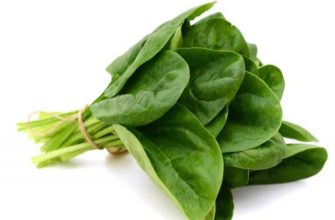Everyone knows that hazelnuts are a valuable source of energy that keeps the body satiated and allows you to be active. They are often taken as a snack, in hikes, and in addition, are valued as a fragrant and tasty dessert treat. What are the benefits of nuts for the body, when they can and should be consumed, and when not – let’s consider further.
Where does hazelnut grow and what does it look like?
Since ancient times, hazelnut has grown in Europe and Asia Minor, many centuries ago it was collected in the Caucasus and the Balkans. At one time the famous Michurin breeder was engaged in breeding of resistant cultivated varieties of hazelnut, after which it became possible to grow hazelnuts under any conditions.
Turkey, where hazelnuts are grown on mountain slopes, accounts for 60% of the world’s hazelnut supply. It is also popular today in North America.
Hazelnuts grow on trees in small chestnut-like clusters. The nuts have an outer shell of pulp and green “skirt”, inside which the bone nut is hidden.
Nut shell is normally almost rounded, resembling the shape of a heart with a cape on the tip, on average 2 cm in diameter. Under it there are walnut kernels, which are used as food as well as medicines.
Shrubs or trees can get accustomed to any conditions, do not require abundant manual watering and bear fruit for several decades without degenerating.
Hazelnut and hazelnut: what’s the difference
The terms “hazelnut” and “hazelnut” are often used synonymously, since these nuts share a common origin. To be more precise, hazelnut is a wild hazelnut, the progenitor of hazelnut. It was it that began to be cultivated and ennobled, eventually obtaining a large and richly flavored nut of noble varieties called hazelnut.
The two subspecies have slight differences. Hazelnuts are slightly more elongated, resemble acorns, and have a more herbaceous and not as brightly nutty flavor. Hazelnut is distinguished by the high quality of oil obtained from its fruits, a refined rich flavor, and its nuts look like balls with a slight “brain” relief.
In general, these nuts do not differ in their composition. In stores, you can most often find enriched hazelnuts, but hazelnuts are more often sold from hand. The fruits may not be as flavorful, but in general they also bring a lot of benefits to the body.
Which is healthier: hazelnuts or almonds?
Since hazelnuts and almonds are two different nuts, it is difficult to talk about which one is healthier. Ideally, these products should be included in the diet and rotated to provide the body with a full range of vitamins and minerals.
Many people consider almonds a dietary nut, as they contain less fat, as well as a rich supply of vitamin E, which is good for the skin and has an antioxidant effect. Nevertheless, it is the hazelnut that leads the way in terms of content:
Manganese, essential for bones and sugar control;
Magnesium, essential for the proper functioning of the nervous system;
Copper, which helps maintain healthy blood and reduce inflammation;
folic acid, good for the endocrine and immune systems;
as well as fluoride and cobalt.
However, almonds contain alkaloids, which are potentially harmful to the body.
Both nuts are very useful and appropriate in the diet of all people in the absence of individual contraindications.
How many hazelnuts can be eaten per day
The benefit of the product is manifested in full only when it is consumed in dosage. To avoid harm, you should not overeat these hearty nuts. Young women with moderate activity are recommended to eat 25-30 grams per day, it is enough to do it 2-3 times a week. Men can increase the portion to 40-50 grams, depending on the intensity of physical activity and the metabolic rate.
Children should preferably take only 15-20 grams at younger ages and 20-30 grams in adolescence, and care should be taken to avoid allergies. For the elderly, 20 grams of hazelnuts are also enough to keep the digestive system from overstressing.
One hazelnut kernel has an average of 2-3 grams, so you can eat 2 servings of 5-8 nuts per day.
Composition and calories
Hazelnut, like any other nut, has a rich nutrient composition. It is characterized by high-quality vegetable protein, high fat content, fiber, minerals and vitamins.
The caloric value of hazelnuts is about 650 kcal per 100 grams. Of these, 15 g are proteins, 60 g are fats and up to 10 g are carbohydrates. Therefore, the nutritional value of hazelnuts can be compared to meat and eggs. The nut becomes the main source of fat and protein on vegetable diets and in the diet of vegans.
The vitamin and mineral composition of the product is represented by iron, manganese, potassium, calcium, magnesium, fluorine, zinc, selenium, sodium, sulfur, phosphorus, copper, cobalt, as well as vitamins of group B, A, E, PP, K and C. Due to this, the nut is valuable for its strengthening and antioxidant properties, which we will talk about in more detail below.
Which hazelnut is healthier: roasted or raw
Plant proteins are often very difficult for the body to digest, and sometimes even cause allergies. When cooked, they curdle and become digestible. Therefore, in terms of nutritional ease hazelnuts, like many other nuts, it is desirable to calcify before use. It can also be roasted in oil or sugar syrup.
Nevertheless, the raw hazelnut contains a high level of phytonutrients, and during the thermal processing most of the useful substances are broken down. That’s why experts recommend to eat hazelnuts fresh in small amounts.
The optimal way to preserve all the useful properties and facilitate digestion would be to eat hazelnuts in processed form, as well as fresh hazelnut oil, which is not subjected to heat treatment.
What are the benefits of hazelnuts
Hazelnuts are rich in essential amino acids and vitamins that help to quickly saturate and strengthen the body. They have a positive effect on all major organs and systems.
General benefits
Strengthen the heart muscle and blood vessels, normalize blood pressure and maintain a balance of calcium and potassium for proper cardiovascular function.
Fight against harmful cholesterol, protect blood vessels from the development of atherosclerosis.
Control blood sugar levels due to the high content of manganese.
Participate in the formation of red blood cells (iron, copper, calcium) and platelets (vitamin K).
Protect the nervous system, ensuring its normal functioning, maintaining thinking functions, normalizing resistance to stress and mood (magnesium, B vitamins).
Stimulate the proper functioning of the gastrointestinal tract and normal metabolism, improve lipid metabolism, expelling all harmful substances from the body. The fiber content helps to cleanse the intestines and improve absorption, eliminating constipation and bloating.
Also hazelnut is useful for increasing fertility due to the high content of vitamins E and B9. They normalize hormonal background, support tissue health and stimulate the synthesis of healthy germ cells.
For the skin hazelnut is useful for its healing, nourishing and moisturizing functions. It protects from direct sunlight, softens skin, removes keratinized particles, saturates epithelium and hair with vitamins and valuable oils, protects from peeling, irritation, drying, feeling of tightness, stimulates collagen production.
At the same time, hazelnut helps to stop inflammatory processes and has anti-carcinogenic effect. It is in this nut that contains a substance that is used in pharmacology in medicines to fight cancer.
The nut strengthens the immune system, as well as helps build healthy muscles and strengthens bones. Its polyunsaturated fatty acids and vitamins also promote renewal and rejuvenation.
Hazelnut is recommended for everyone, you can alternate it in your diet with meat dishes and use it as the main source of calories or take it as a snack to stimulate brain activity and get quality energy during the day. It is very useful to combine hazelnuts with dried fruits and vegetables.
Depending on the characteristics of the body and medical conditions, hazelnuts can bring a different benefit or harm to each person, so it is worth considering some recommendations in more detail.
Is it possible to eat hazelnuts when losing weight
Although nuts are a high-calorie product, when losing weight, they have a positive effect on the body with one important condition: in no case can you exceed the daily portion. Otherwise, the nuts can cause gastrointestinal upset, as well as harm the figure. If you consume hazelnuts a little at a time, they will benefit in the following ways:
Will help get rid of harmful cholesterol, purify the blood.
Will stimulate lipid metabolism.
Will control blood sugar levels, helping to avoid unnecessary snacking and poor health.
Will help cleanse the liver and intestines from toxins.
It has an antioxidant effect, rejuvenating and accelerating the renewal of the body.
Supports the heart and brain in conditions of reduced daily portions of food and physical exercise.
Strengthen the nerves, help maintain stability and avoid breakdowns.
Protect the musculoskeletal system from loss of useful components.
Build muscle, which is important for a slim figure, strength and endurance.
Allow the skin to stay healthy while cleansing the body.
During the diet to lose weight you have to limit the number of consumed carbohydrates and fatty foods, so it is important something to make up for the lack of valuable fat, necessary for brain function and maintaining immunity. Therefore, hazelnut not only can, but should be introduced to a healthy diet in order to lose weight properly and without harm to health.
Hazelnut in medicine
In folk and even traditional medicine, hazelnut is recommended as a supportive remedy for heart and joint diseases, diabetes, to improve the skin and increase immunity.
For Diabetes Mellitus
Hazelnut is one of the useful products in diabetes. Because of the high sugars or starch content, diabetics have to forgo many foods with high GI. This limits their diet in vitamins and valuable micronutrients. Nutritionists recommend making up for the deficiency with nuts.
Hazelnuts are slowly digested by the body, keeping the feeling of fullness and for a long time fuelling the diabetic with energy, so there are no sudden spikes in blood glucose levels. Moreover, hazelnuts are rich in manganese, copper and vitamins which help to control not only sugar but blood cholesterol as well. Moderate consumption of hazelnuts will help maintain body strength without carbohydrate abuse.
Important: the glycemic index of hazelnuts is 15 units.
In pancreatitis.
During the acute phase of the disease, hazelnuts, as well as other nuts and fatty foods, are forbidden to eat, so as not to harm the body. In the case of reactive pancreatitis and in the quiet phase of the chronic disease, you can introduce hazelnuts, but only in processed form – dried or fried without oil. In this case, it is important to observe small portions, crush nuts and use them with non-fat dairy products and vegetable purees.
With gastritis
When the gastrointestinal mucosa is irritated, it is better to refuse from nuts or consume them very carefully: in chopped and processed form, in small portions and accompanied by other soft foods. The daily rate in this case is reduced to 4-5 nuts a day, and it is desirable not to eat hazelnuts every day.
Interestingly, the body copes much better with hazelnut oil for gastritis, since it does not contain rough fiber and allergenic proteins. At the same time, it is rich in vitamins E and A, K, as well as other trace elements that help to relieve inflammation and accelerate tissue healing.
For constipation
Hazelnuts are able to cleanse the intestines and eliminate stagnant sludge masses. However, it is not the recommended food. Better for constipation resort to vegetables and fruits with soft flesh, which have a laxative effect, such as pears, plums, zucchini. Hazelnuts in this case will help to stabilize the blood, and to avoid the loss of potassium, necessary for normal functioning of the kidneys and heart.
In case of gout.
Any fatty and spicy food in gout is forbidden. Nuts are also not recommended by doctors because they usually contain a lot of purines. Nevertheless, some kinds are allowed to eat in small amounts. These include hazelnuts.
To saturate the body with valuable polyunsaturated fatty acids and to strengthen the heart, as well as to clean the blood, you can consume hazelnuts little by little, monitoring your health and abandoning the product in cases of exacerbation.
Recipes of folk medicine based on hazelnuts
In folk medicine, not only hazelnut kernels are used, but also its shells, bark and leaves of the tree. From them prepare decoctions and tinctures, as well as compresses and healing mixtures.
To help yourself at home to cope with symptoms of colds, bronchitis, asthma, 10-12 hazelnuts are ground into crumbs and added to hot milk. Drink this potion by the glass 3 times a day, until the disease recedes.
Interestingly, the same recipe for goat’s milk with honey is considered a cure for impotence. And with prostatitis brewed walnut shells. For 0.5 kg of shells take 0.75 liters of water, bring to a boil, boil for a third, cool the mixture and strain. Take 2 tablespoons 3 times a day before a meal for half an hour. The course of treatment – 2 months.
With varicose veins can be used walnut bark. Grind the raw material at the rate of 1 tbsp. per glass of water. Bring the mixture to a boil, keep on low heat for 5 minutes, then insist another 3-4 hours. Strain decoction to drink half a cup 3 times a day, preferably before a meal. Decoction does not keep for a long time.
Hazelnut in cosmetology
Most often in cosmetics, hazelnut oil is used. It perfectly nourishes the skin and hair, helps restore elasticity and protects from the damaging effects of the sun. The oil is added to scrubs as a base so as not to damage the skin in delicate areas with abrasive particles. Wraps and masks help strengthen and nourish the hair, skin and nails. Extracts are also added to anti-aging creams for mature skin to restore its elasticity and eliminate a dull complexion. Hazelnut pulp is also used as a natural dye for hair to give it a noble chestnut-chocolate hue.
Recipes:
To revitalize the skin of the face, you can prepare the following serum: 3 tbsp. olive oil, 1 tbsp. hazelnut oil, 12 drops each of essential oils of geranium and lavender. The mixture should be heated slightly in a water bath to combine the oils thoroughly. The product can be stored up to 2-3 weeks (it does not disappear). Apply the serum to the skin a few drops by massage movements. Suitable for normal and other skin types.
To restore split hair, you can mix 2 yolks, 1 big spoonful of walnut oil and 1 drop of lemon peel oil. Mask mix and apply to soaked hair for 30-40 minutes under the foil, then wash off with shampoo. Curls will gain softness, shine and elasticity.
Hazelnut in cooking
In the kitchen, hazelnut is used in the preparation of many dishes. Most often we are used to seeing it as a sprinkle on cakes, ice cream, in porridges and dairy products. Also, hazelnut chips are often added to dough, chocolate and fondant candies.
However, hazelnuts are often used as a condiment to meat and fish dishes, added to stuffings, pies, sauces, gravies and casseroles. Some salad recipes include pounded walnuts.
There are also traditional dishes that include hazelnut and hazelnut. For example, halva is made from walnut flour or meal, and kozinaki and grillage are made from crushed nuts. Many people know the Caucasian healthy sweet churchela, which is made with natural juices.
In addition to additives, hazelnuts can act as the main component. For example, it is used to make a nut paste, often with the addition of cream, cocoa products or honey. It is usually spread on bread or cookies and served with fruit.
Hazelnut oil is used to dress salads and desserts. It can not fry anything on it, as such a product is very smoky when heated, and loses its useful properties.
There are also recipes for “nut bread” without added flour, which is very popular among vegetarians and raw fooders. Such a product can include starch, dried fruits, seeds of other plants and fruit and vegetable purees. A thick plastic mass resembling dough is prepared, after which it is shaped and dried in a cold way.
Useful properties of hazelnut oil
Hazelnut oil is obtained by cold pressing, so it retains all its useful properties and maximum vitamins. This is especially true for vitamin E, 50% of which decays during thermal processing of hazelnuts. Hazelnut oil is considered a delicacy, but it is available in stores. It is used in cooking, cosmetology and even medicine to make healing blends.
Hazelnut oil has a healing and soothing effect, it is also excellent for softening the skin and hair, helps eliminate stretch marks, rough skin and peeling.
When used internally, it has beneficial effects on the heart, gastrointestinal tract, immune and nervous system.
The oil can try to use allergic people. Most often, rejection and discomfort are caused by the proteins of nuts, which remain in the cake and do not get into the oil liquid.
It is also indicated for gastritis, colds and inflammatory diseases for early tissue repair and increase the body’s resistance.
The oil is used in aromatherapy. For 5 square meters of space in the water need to add 2-3 drops. The smell helps to relax the nervous system.
Harm and contraindications
In order not to harm the body, hazelnut should be consumed little by little. Nutritionists recommend eating hazelnuts in the morning or for the second breakfast, so that the fruit can be fully digested by the body. In the case of allergic reactions, it is necessary to consult a doctor.
Careful consumption of hazelnuts is necessary in the following cases:
In pregnancy and breastfeeding;
Liver problems and acute gastrointestinal diseases;
Allergies to other nuts: macadamia, Brazil nut, walnut, chestnut;
In children under 5 years of age.
In the presence of chronic diseases should ask the attending physician the possibility and dosage of using hazelnuts and other nuts.
How does hazelnut allergy manifest itself?
Hazelnut allergy can be expressed as intestinal discomfort, and skin reactions:
Rashes, increased skin sensitivity, burning on the lips;
burning or “itching” in the intestines;
flatulence, bloating, unusual bubbling in the stomach;
elevated body temperature, acute headache;
nausea, signs of choking or high blood pressure, swollen lymph nodes.
Peanut allergy usually does not resemble a cold, it is more like a digestive disorder or general malaise. In the case of alarming symptoms, it is recommended to consult a doctor, and completely eliminate suspicious products from the diet until the cause of the allergy is clarified.
How to choose and store hazelnuts
For hazelnuts to retain their nutritional properties as long as possible, it is better to give preference to a whole nut, sold in the shell. Not only does it stay fresh longer, but it also costs much less.
To avoid buying spoiled nuts, pay attention to their freshness:
The boxes should be light and shiny, not dusty;
In no case the nuts should not be damp/moist, with signs of mold;
A distinctive thumping sound must be felt when you shake them.
If you buy peeled hazelnuts, also pay attention that the brown film is intact, otherwise the kernels can be considered to have lost their medicinal properties.
It is better to store hazelnuts in cloth bags in a cool dry place. Closed nuts remain useful for a year, and when stored in the refrigerator – from 2 to 4 years. It is desirable to consume peeled nuts within a couple of months. Do not store hazelnuts in polyethylene, as it can get fungus in them. It is also undesirable to keep them in the sun.
How to get hazelnuts out of the shell quickly
There are a few simple ways to get rid of hazelnut shells:
Use a walnut peeler or garlic peeler.
Heat the nuts and hit each one with a hammer.
For large quantities, put them in a bag, put something heavy (a brick, a board) on top, and press down. After that, go over the separated nuts and repeat the procedure for the remaining ones.
To remove the membrane from the nuts, you can expose them to boiling water and hold them for about 15 minutes or boil them in boiling water for 1-3 minutes. After that they should be cooled sharply, as boiled eggs, under cold water.
Can I give hazelnuts to animals?
Some nuts are introduced into the diet of pets to enrich their food with minerals, but you need to treat such a supplement with great caution. Hazelnuts are not recommended for dogs or cats, as the high calcium and iron content can provoke urolithiasis.
Also nuts are often allergic to dogs and cats, causing digestive disorders. It is forbidden to give pets such a treat in whole form, so as not to provoke indigestion.
On whether it is possible to give the pet oil to improve the quality of the coat, as well as the nuts themselves in ground form – it is better to ask in more detail from the veterinarian, taking into account the breed of the pet.
How to roast hazelnuts
Hazelnuts can be dried as a whole or in husked form. The dried boxes are much easier to break apart. Whole hazelnuts are most often dried in the oven, while peeled ones are dried on a grist or in some other way.
In the oven
To prevent hazelnuts from drying out and to keep them longer, they must be dried. Then the flavor becomes rich and less grassy. To do this, place the nuts in their shells on a lined baking tray and put them in an oven heated to 90 degrees. Drying will take 2-3 hours. Periodically turn the fruit to dry evenly on all sides.
You can also roast peeled nuts. Then the oven should be heated to 180 degrees and distribute the kernels on a sheet. It will be enough to keep them in the oven for 10-15 minutes, stirring occasionally. After turning them off, you need to let them finish on a cooling tray or pour them into a deep bowl and cover with a towel.
In the microwave
You can quickly cook nuts in the microwave by placing them in any convenient container in 1-2 layers. You should choose the highest wattage possible. For 750 watt cooking time will take about 5-6 minutes. The nuts should be watched. When using this method for the first time, it is better to take them out periodically and check them, because in the microwave oven, they roast from the inside, and you can not immediately understand by the appearance that the nut is ready.
When they start to crackle as they cook, that means about a minute left. Once removed, the walnuts will still be cooked to perfection, so it is highly discouraged to roast them to a distinct golden “blush.”
In a frying pan.
The easiest way to roast a small amount of hazelnuts until done is to heat them in a dry frying pan for 10 minutes. The main thing is to stir the nuts, not letting them stick. It is not necessary to cover the pan with a lid, so as not to retain moisture. Ready nuts can be sprinkled with salt.
Interesting facts about hazelnuts
Hazelnut is a versatile nut, which is commonly added to hot main dishes, salty snacks and desserts.
Only a nut whose fruit is 2 cm in diameter is considered to be of high quality, the varietal diversity does not imply a deviation from such a norm.
The Circassians cultivated hazelnuts as early as the 4th-3rd centuries B.C.
A dangerous point may be that hazelnut allergens can accumulate, so rejection and unpleasant symptoms may not appear from the first use.
The tradition of adding hazelnut extract to coffee and chocolate drinks also comes from antiquity and was done to give the drink a rich and unusual flavor.
Hazelnuts are an official plant of the state of Oregon in the United States.
Hazelnuts are considered a very healthy and valuable food for a reason, which nourishes the brain, muscles and skin. Try cooking something unusual with hazelnuts and discover new sides of the healthy fruit.









